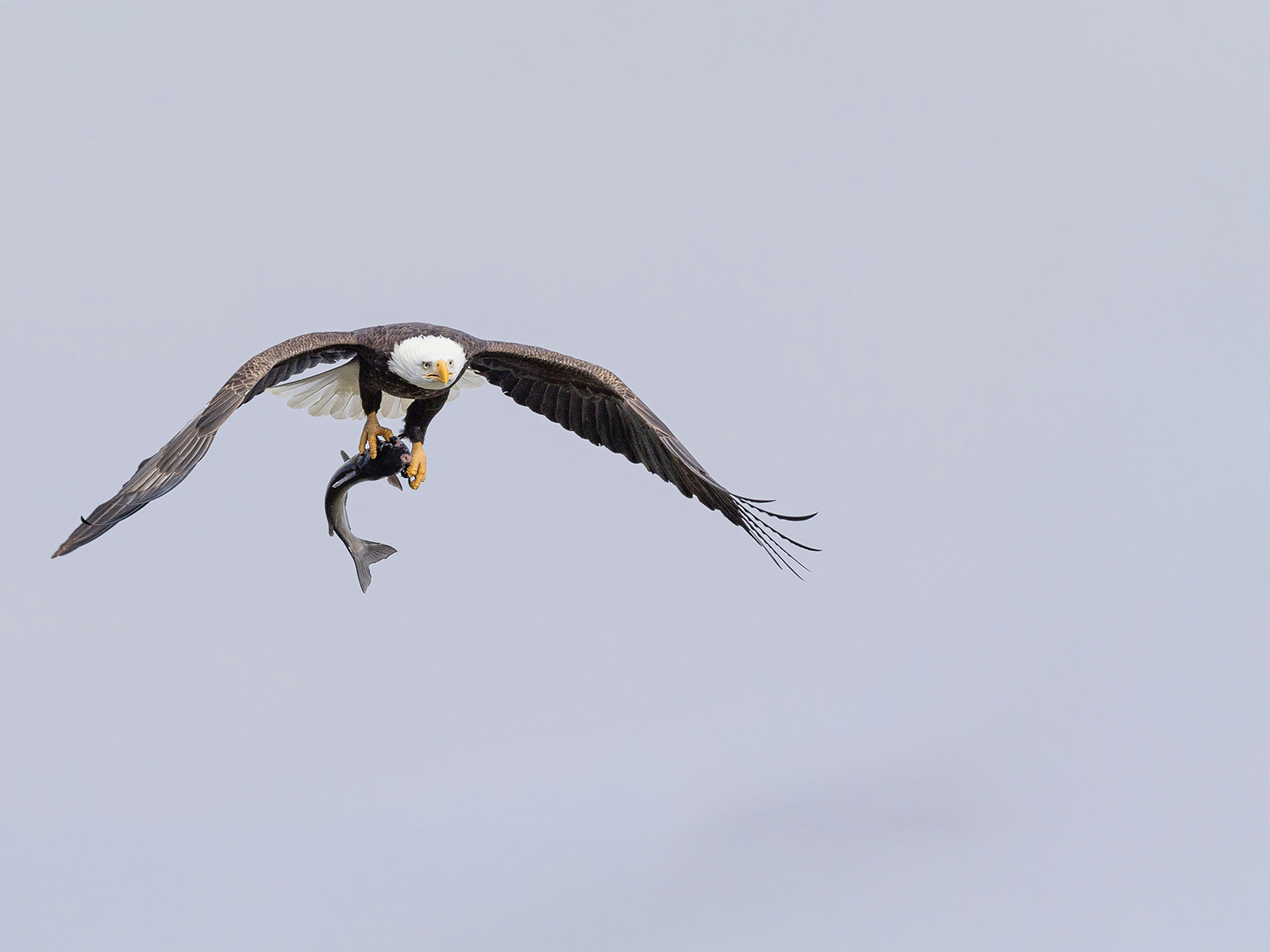Bald Eagle
Bald eagles are not actually bald. The old word balled meant “white-headed.” They do not develop their distinctive white head feathers until they are 4–5 years old.
Day of Creation: five
Biblical Kind: hawk (includes all eagles, harriers, hawks, kites, and Old World vultures)
Status: least concern
Length: 28–40 inches (71.1–101.6 cm)
Weight: 6.5–15 lb. (2.9–6.8 kg)
Habitat: any biome in Canada, the United States, and northern Mexico
Lifespan: 20–38 years in the wild; nearly 50 years under human care
Diet: carrion and 400+ species of animals
Family Life: solitary, but will pair up during breeding season
Reproduction: 1–3 eggs hatch after 35-day incubations
Fun Facts
Eagle eyes are among the sharpest of any animal, and they can see prey up to 2 miles (3.2 km) away. They also have exceptional hearing and possess some sense of smell.
With wingspans up to 8 feet (2.4 m), bald eagles can fly up to 43 mph (69.2 kph) and dive for prey as fast as 100 mph (161 kph). They are powerful fliers but prefer to soar on thermals to conserve energy when needed. They are quite maneuverable in the air and will attack prey in flight. Courtship flights occur between mated pairs, and territorial aerial battles take place between rivals.
Pairs often mate for life and build the largest tree nests of any living animal. They often reuse old nests and add material every year. The record nest measured 20 feet (6 m) deep by 9 feet, 6 inches (2.9 m) wide and weighed 4,409 lb. (2,000 kg).
Benjamin Franklin opposed bald eagles as the national symbol of the United States. He stated, “He does not get his living honestly . . . he is a rank coward,” likely referring to the bald eagle’s habit of stealing food from other animals.
When bald eagles are portrayed in the media, they are usually accompanied by the call of a red-tailed hawk, which is louder and more powerful than the high chirps that bald eagles produce.


